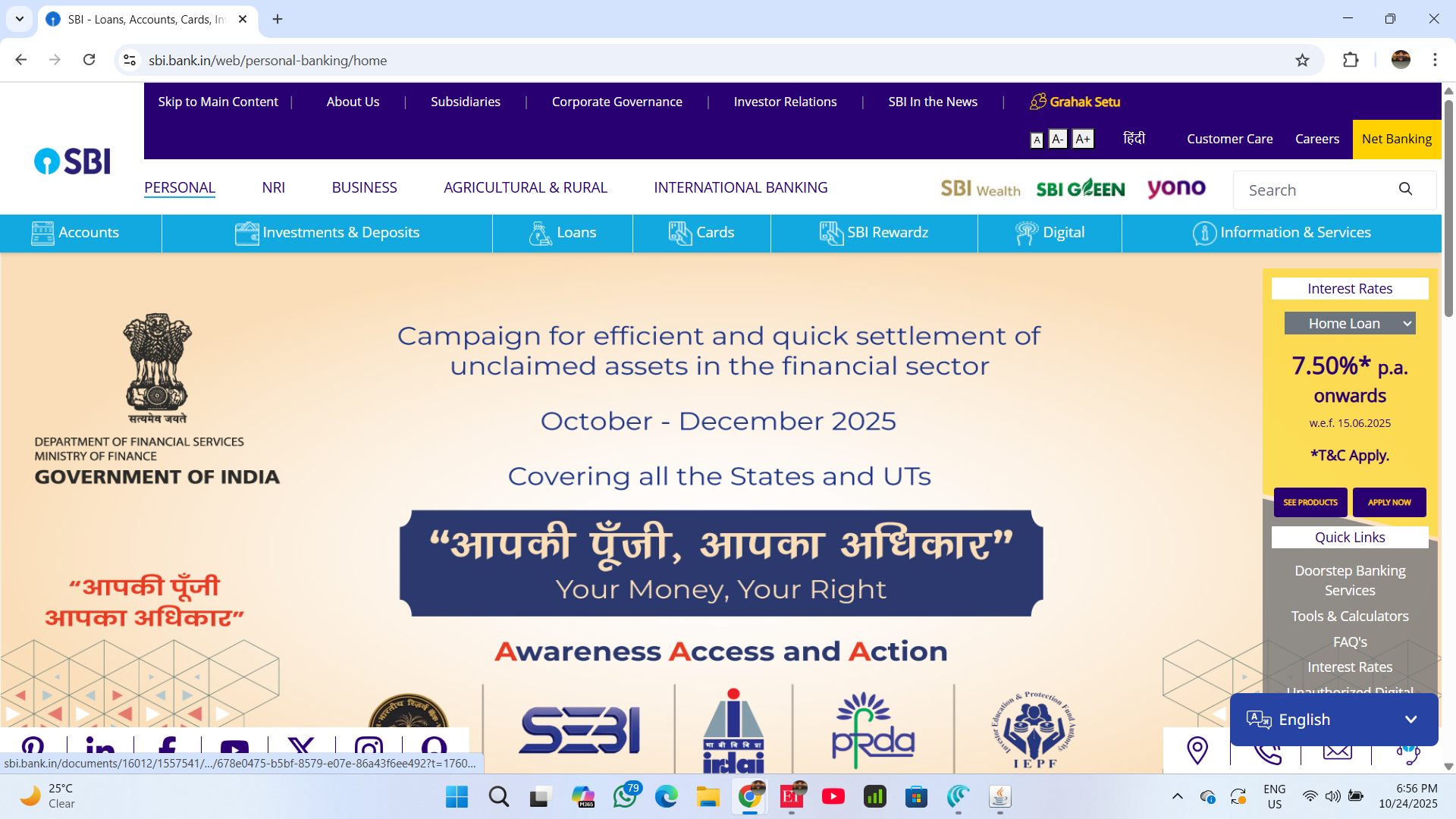
#SIP #MutualFunds #IndiaInvestment #LongTermReturns #ExpenseRatio #ExitLoad #Transparency #InvestmentFacts #FinanceIndia #10YearSIP
हिंदी आर्टिकल: 10 साल के लिए 5000 SIP—फैक्ट्स, फिगर्स, पारदर्शिता और चार्जेस
1. भारत में SIP का रुझान और रिटर्न्स
-
पिछले 10 सालों में, इक्विटी आधारित एसआईपी से मिलने वाला औसत रिटर्न लगभग 12–15% XIRR रहा है। कुछ चुनिंदा स्मॉलकैप फंड्स ने इससे अधिक, जैसे 20% या उससे ऊपर का XIRR भी दिया है।
-
उदाहरण: एक प्रमुख स्मॉल कैप फंड ने पिछले 10 वर्षों में करीब 20% की कंपाउंड एनुअल ग्रोथ रेट (CAGR) देखा, जबकि कुछ फ्लेक्सीकैप और एलईएसएस फंड्स ने 16-19% CAGR भी क्रॉस किया।
-
बीते तीन वर्षों में SIP में निवेश, खाते और एसेट्स अंडर मैनेजमेंट (AUM) में रिकॉर्ड तेजी देखी गई है—2024 में कुल SIP AUM ₹11 लाख करोड़ के करीब पहुंच गया।
2. पूंजी सुरक्षा और म्यूचुअल फंड स्ट्रक्चर
-
हाइयर रिटर्न के लिए इक्विटी म्यूचुअल फंड्स में जोखिम रहता है, यानी आपका मूलधन हमेशा मार्केट रिस्क में रहता है—पूंजी सुरक्षा की कोई गारंटी नहीं होती।
-
सुरक्षित विकल्पों में डेट फंड्स, बैलेंस्ड एडवांटेज फंड्स आदि आते हैं, जिनके रिटर्न्स अपेक्षाकृत कम होते हैं।
3. अग्रणी म्यूचुअल फंड हाउसेस: ट्रैक रिकॉर्ड
-
सबसे बड़े और पुराने एएमसी (संपत्ति प्रबंधन कंपनी) की लिस्ट में शामिल हैं: SBI, ICICI Prudential, HDFC, Kotak, Nippon, Aditya Birla Sun Life, UTI, Axis, Mirae Asset, DSP आदि। इनका लंबा ट्रैक रिकॉर्ड (10–50 साल+) है और मार्केट में विविध स्कीम्स हैं, जिनमें इक्विटी, डेट, हाइब्रिड फंड्स शामिल हैं।
-
साल 2025 में सबसे बड़ा AUM: SBI म्यूचुअल फंड (₹11.5 लाख करोड़), ICICI Prudential (₹10 लाख करोड़), HDFC (₹8.4 लाख करोड़) और Nippon (₹4.7 लाख करोड़) है।
4. एक्सपेंस रेशियो, एग्जिट लोड और ट्रांसपेरेंसी
-
एक्सपेंस रेशियो: आमतौर पर 0.5% से 2.25% तक, फंड कैटेगरी और प्लान पर डिपेंड करता है (डायरेक्ट प्लान में कम, रेगुलर में ज्यादा)।
-
एग्जिट लोड: यदि आप निर्धारित लॉक-इन पीरियड से पहले फंड निकालते हैं, तो 1% तक (कुछ फंड्स में 2-3% भी) एग्जिट लोड लगता है; लंबे समय निवेश करने पर आमतौर पर कोई एग्जिट लोड नहीं होता।
-
ट्रांसपेरेंसी: सेबी ने 2024 के अंत से मजबूत गाइडलाइंस लागू की हैं—एक्सपेंस रेशियो, रिटर्न्स, रिस्क-मीटर सभी की विस्तृत, कलर-कोडेड जानकारी हर फंड स्कीम में अनिवार्य है।
5. विवाद और शिकायत रिकॉर्ड
-
साल 2018-2024 के बीच कुछ फंड हाउसेस में फ्रंट-रनिंग, कॉरपोरेट डिफॉल्ट, मैनेजमेंट स्कैंडल्स की घटनाएं हुईं, जैसे Axis Mutual Fund, HDFC, Nippon, Kotak, DSP आदि पर SEBI ने कार्रवाई की थी।
-
कुल निवेशक शिकायत बहुत कम रही—2023-24 में पूरे इंडस्ट्री में लगभग 500 शिकायतें आईं, जिसमें अधिकतर रूटीन, डॉक्युमेंटेशन, स्टेटमेंट या सर्विस संबंधी थी।
-
SEBI और AMFI ने कम्प्लेंट रेजोल्यूशन के लिए SCORES आदि प्लेटफॉर्म बनाए हैं।
6. चार्जेस का खुलासा
-
सभी फंड्स पर चार्जेस (एडमिन, फंड मैनेजर फीस, डिस्ट्रीब्युटर कमीशन, एग्जिट/एंट्री लोड) डिटेल में फंड डॉक्युमेंट्स, वेबसाइट्स व SEBI के आधिकारिक नोटिफिकेशन में पारदर्शी तरीके से बताना अनिवार्य है।
-
निवेशक SEBI की ऑफिशियल साइट, AMC वेबसाइट, AMFI और लोकप्रिय पर्सनल फाइनेंस पोर्टल्स में हर स्कीम के नये और पुराने चार्जेस, रिटर्न्स, रिस्क-मीटर, एक्चुअल NAV और रिस्क प्रोफाइल देख सकते हैं।
7. 10 साल बाद रिटर्न्स—ओरिजिनल डाटा
-
10 साल बाद 5,000 प्रति माह के SIP (₹6 लाख इन्वेस्टमेंट) पर, यदि अनुपातिक ऐवरेज रिटर्न 12% रहता है तो कुल वैल्यू करीब ₹11.5–13 लाख; यदि रिटर्न्स 15-20% मिलता है, तो वैल्यू ₹14–18 लाख या उससे ज्यादा हो सकती है (मथटूल्स व ऑनलाइन SIP कैल्क्युलेटर से भी वेरिफाई कर सकते हैं)।
-
रियल लाइफ में, smaller fund categories (smallcap/flexicap) ने बार बार 20%+ CAGR भी छूआ है, लेकिन यह मार्केट के उतार-चढ़ाव और सभी इक्विटी फंड्स में नहीं पाया जाता।
English Article: Facts & Figures for 10-Year, ₹5,000 SIPs in Indian Mutual Funds
1. SIP Performance Trends & Returns (10 Years)
-
Equity SIPs over a 10-year period have delivered an average XIRR (Extended Internal Rate of Return) of 12–15%, based on top-performing and category average mutual funds. Some small-cap funds, however, have reported 20% or higher XIRR over a decade.
-
For instance, the Nippon India Small Cap Fund delivered around 20% CAGR, while certain flexi-cap and thematic funds exceeded 16-19%.
-
SIP investments, account registrations, and AUM have hit record highs. As of 2024-25, SIP inflow monthly surged to ₹21,000 crore, with SIP AUM at over ₹11 trillion4.
2. Capital Safety and Mutual Fund Structure
-
All equity mutual fund investments are subject to market risk. There is no capital guarantee in equity or hybrid funds.
-
Debt and balanced advantage funds reduce volatility and risk but typically offer lower long-term returns compared to pure equity or small/mid-cap funds.
3. Largest, Most Experienced Fund Houses
-
Top Indian AMCs (Asset Management Companies) based on size, history, and number of schemes include: SBI, ICICI Prudential, HDFC, Kotak, Nippon India, Aditya Birla Sun Life, UTI, Axis, Mirae Asset, and DSP.
-
As of May–July 2025, the largest AMCs by AUM: SBI Mutual Fund (₹11.5 lakh crore), ICICI Prudential (₹10 lakh crore), HDFC (₹8.4 lakh crore), and Nippon India (₹4.7 lakh crore).
-
These fund houses manage a mix of equity, debt, balanced, sectoral, and thematic schemes, with many operating for over 25–50 years.
4. Expense Ratios, Exit Load, and SEBI Transparency Rules
-
Expense Ratios: Range from 0.5% to 2.25%, depending on plan (direct or regular) and fund size/category. Direct plans have lower ratios as they exclude distributor commissions.
-
Exit Load: Typically 0–1% if redeemed within a year; longer-term investors usually face little or no exit load. Investors should check scheme documents for precise details.
-
Transparency Regulations: Since December 2024, SEBI mandates color-coded risk-o-meters, and separate, standardized disclosure of recurring expenses, returns, and risk for direct and regular plans, to ensure clarity and comparability.
5. Controversies, SEBI Action & Complaint Records
-
Notable past regulatory actions (2018–2024) include instances of front-running, fund mismanagement, credit events, or defaults at select AMCs such as Axis Mutual Fund, HDFC, Nippon, Kotak, and DSP.
-
Despite such events, the overall complaint rate in the mutual fund industry is notably low—around 485–500 complaints in 2023-24, mainly for routine service or documentation delays, with very few critical cases.
-
SEBI and AMFI operate robust grievance redressal mechanisms including platforms like SCORES for complaint lodging and resolution.
6. Charges Disclosure
-
All mutual funds must disclose detail of management fee, expense ratio, exit load, entry load (if any) transparently in scheme documents and websites. From 2024, separate disclosure for direct and regular plans is mandatory.
-
Investors can also compare latest and historical charges, returns, and risk levels from official AMC, AMFI, SEBI, and leading finance platforms.
7. Long-Term SIP Returns Snapshots
-
SIP of ₹5,000/month (₹6 lakh over 10 years): At 12% annualized, maturity value about ₹11.5–13 lakh. At 15% XIRR, value rises to ₹14–15 lakh; at 20%, final value can touch ₹18 lakh or higher depending on compounding, fund performance, and market conditions.
-
Real, top-performing small-cap/flexicap funds have reached 20% CAGR, but not all funds or categories achieve this—returns vary significantly across fund types and market cycles.
Disclaimer: This article provides only facts and figures from reputable sources and regulators. No mutual fund recommendation or rating is intended or implied. Readers should compare all facts, check scheme documents, and consult their financial advisor before investing. Each investor is responsible for their own investment decisions based on their goals, risk profile, and available information.







